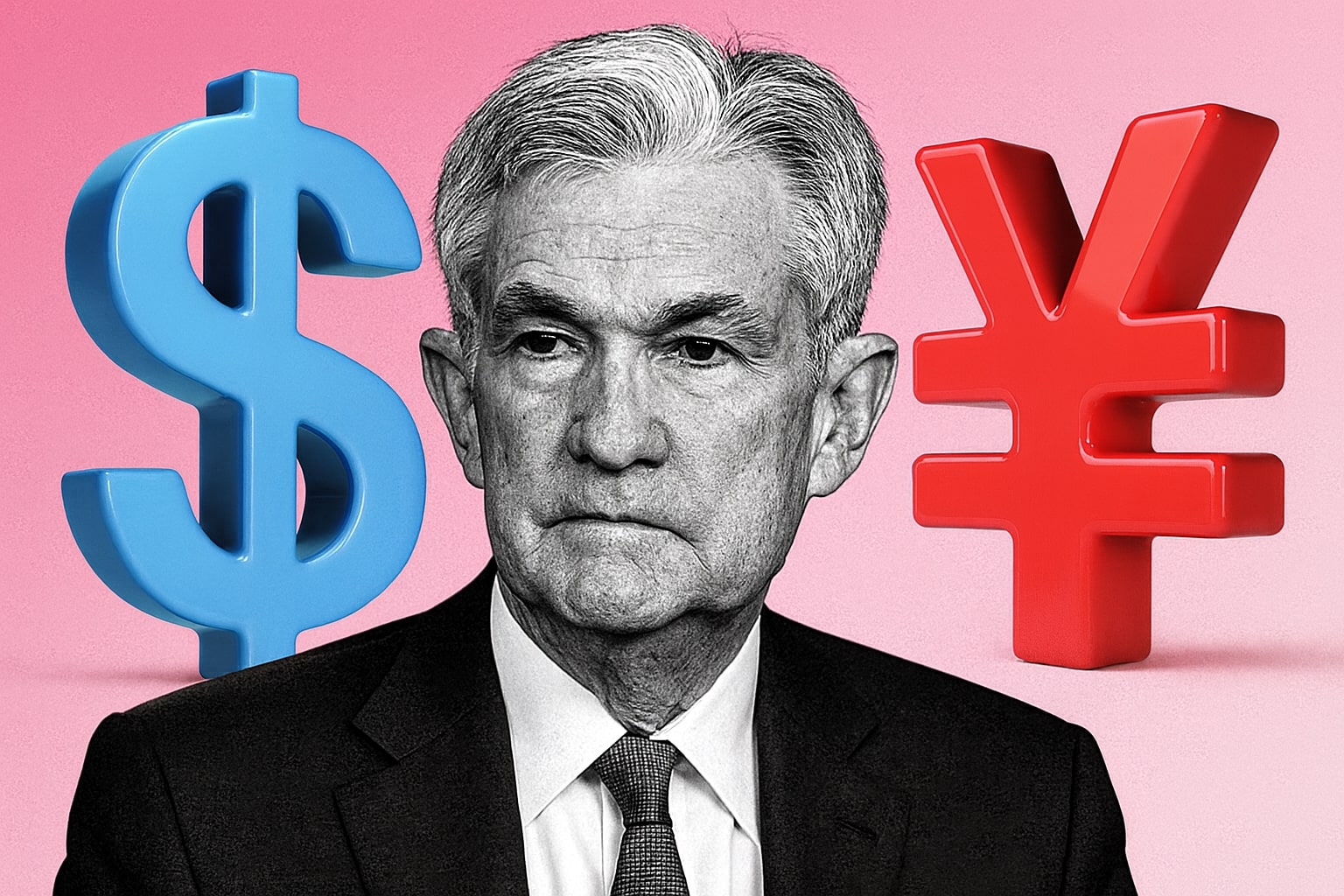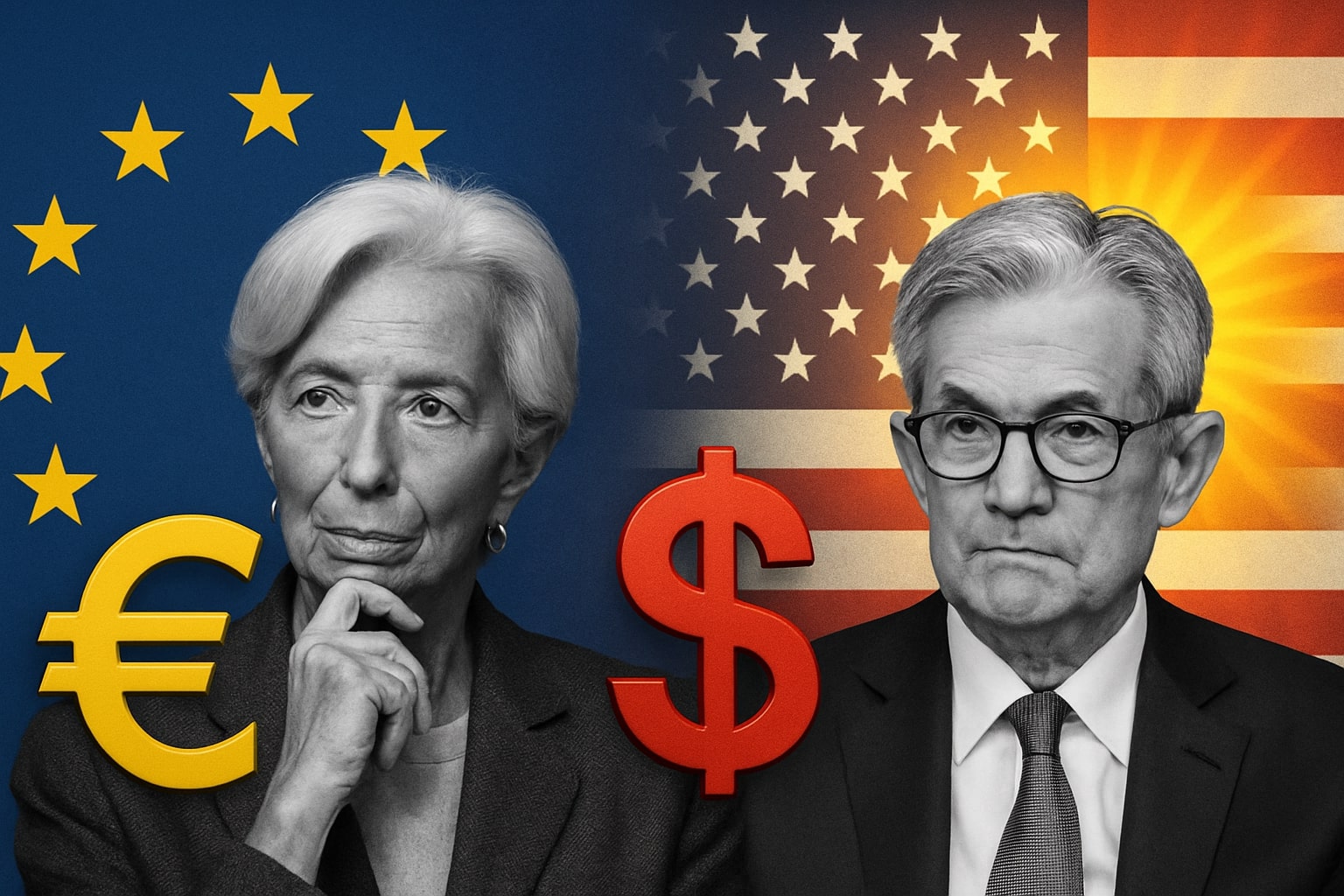
USD/JPY Price Forecast - Dollar to Yen Soars to 157.70 as BoJ Paralysis Deepens Yen’s 6% Fall
The dollar extends gains as the Fed dismisses near-term cuts, driving USD/JPY toward the 52-week high at 158.87 | That's TradingNEWS
USD/JPY Extends Toward 157.70 as Fed Resets Cut Expectations and BoJ Stays Trapped in Ultra-Loose Policy
USD/JPY surged to 157.70, marking a 10-month high, as widening policy divergence between the Federal Reserve and the Bank of Japan fuels relentless dollar demand. Traders repriced expectations for a December Fed rate cut from near certainty to below 30%, following hawkish meeting minutes that reaffirmed policymakers’ focus on sticky U.S. inflation and tight labor conditions. This shift has re-energized the dollar across global markets, with U.S. yields stabilizing near multi-month highs while Japan’s bond curve remains suppressed by yield-curve control constraints. The yen, already down roughly 6% since Prime Minister Takaishi’s election, continues to face structural pressure as fiscal stimulus expands and real rates remain negative.
Monetary Divergence Remains the Core Engine Behind USD/JPY Strength
The pair’s climb reflects deep asymmetry in monetary policy. The Federal Reserve maintains restrictive settings to contain inflation, while the BoJ resists normalization despite headline inflation lingering near 3%. U.S. 10-year Treasury yields hold above 4.35%, compared with Japan’s 10-year yield near 0.8%, preserving one of the world’s widest differentials. Investors seeking yield continue reallocating into U.S. assets, driving persistent capital inflows that underpin USD/JPY’s rally. Japan’s failure to raise rates has anchored the yen as the global funding currency, encouraging leveraged carry positions that amplify every dollar upswing.
Labor Data and Fed Outlook Reinforce Dollar Dominance
Traders now await the September nonfarm payrolls report, delayed by the U.S. government shutdown, with forecasts for +50,000 jobs after 22,000 were added in August. The unemployment rate is expected to remain steady at 4.3%, and average hourly earnings are projected at +0.3%. Given that October’s NFP release was canceled, this report becomes the final labor gauge before the Fed’s December meeting. Stronger-than-expected employment could decisively eliminate remaining rate-cut bets and drive USD/JPY toward new cycle highs above 158.90, last seen in early 2025.
BoJ’s Dilemma and Yen Intervention Risks
The Bank of Japan faces intensifying domestic pressure as the yen trades near levels that historically prompted intervention. Finance Ministry officials have already issued multiple verbal warnings, signaling discomfort with the rapid depreciation. Still, fundamental policy remains unchanged — Governor Ueda continues to stress patience, citing fragile wage dynamics and uneven growth. Japan’s fiscal spending package, estimated above ¥15 trillion ($100 billion), compounds the yen’s weakness by expanding public borrowing while offering no monetary offset. Market participants expect that only an explicit policy shift or coordinated intervention could slow the trend, neither of which appears imminent.
Technical Structure and Market Behavior
USD/JPY broke above its prior rising channel, extending gains toward 157.70 with the RSI signaling overbought conditions near 78, a level not seen since June. The move suggests temporary exhaustion before a corrective phase. Immediate support sits at 156.70, followed by 155.00, the upper band of the prior consolidation range. A sustained drop below 155.70 could open a retracement toward 153.20–152.00, while sustained closes above 158.00 would confirm a breakout targeting 158.87 (52-week high) and 159.50. Price action continues to show strong impulsive legs and shallow retracements — a hallmark of trending strength fueled by capital flows rather than speculation.
Institutional Positioning and Capital Flow Dynamics
CFTC data show leveraged funds maintaining net-long USD/JPY positions near 135,000 contracts, the largest since 2017. Sovereign and pension funds continue shifting reserves into dollar assets, exploiting the rate spread advantage. U.S. Treasury inflows from Japan have risen 12% year-to-date, while outbound FDI from Japanese corporates is increasing, adding further yen supply. These structural flows make short-term corrections shallow and self-correcting, as each dip attracts hedging and carry interest. Tokyo-based exporters, traditionally natural sellers of USD/JPY, have scaled back conversions given weak domestic demand and higher energy import costs priced in dollars.
Investor Sentiment and Policy Sensitivity
Market psychology remains one-sided. With global inflation moderating slowly, investors view the Fed as having little urgency to ease, while Japan’s economic fragility limits BoJ flexibility. The yen’s depreciation has pushed import prices up 9% year-to-date, worsening consumer sentiment. Intervention chatter resurfaces each time USD/JPY breaches 157.00, yet traders see these as tactical rather than structural measures. Volatility indices tied to yen pairs remain subdued near 8.5%, implying the market perceives intervention risk as cosmetic unless the pair accelerates beyond 160.00.
Technical Outlook and Near-Term Scenarios
From a structural standpoint, USD/JPY trades within a “premium zone,” indicating price extension beyond equilibrium. A corrective pullback toward 155.70–156.80 would be technically healthy, providing buyers an entry zone before any breakout attempt. Bullish momentum remains intact as long as daily closes stay above 156.00. The bullish pathway involves a retest of 156.00, higher-low formation, and renewed impulse through 158.87 to target 159.50–160.00. The bearish alternative depends on a rejection near the highs and a decisive break below 155.70, opening the door toward 154.50 and 153.20 support levels.
Read More
-
SCHD ETF Price at $27: Can SCHD’s 4% Yield and 9.15% Dividend Growth Beat High-Yield Covered Call ETFs?
15.12.2025 · TradingNEWS ArchiveStocks
-
XRP ETFs Close on $1B Inflows as XRPI at $10.92 and XRPR at $15.52 Hit 52-Week Lows
15.12.2025 · TradingNEWS ArchiveCrypto
-
Natural Gas Price Forecast: NG=F Holds the $4 Floor as Oversupply Clashes with 2026 LNG Demand
15.12.2025 · TradingNEWS ArchiveCommodities
-
USD/JPY Price Forecast - Dollar to Yen At 155: Yen Strength Builds As BoJ Hike And NFP Collide
15.12.2025 · TradingNEWS ArchiveForex
Macroeconomic Context and Market Correlation
Broader macro flows continue to reinforce the dollar’s dominance. The U.S. Dollar Index (DXY) trades near 100.7, reflecting renewed strength after the Fed minutes, while global risk sentiment remains mixed. Equity markets show resilience — the Dow Jones Industrial Average hovers above 45,800, but risk hedging through currency markets remains active. The yen’s correlation with Treasury yields sits above 0.81, meaning any further rise in U.S. yields could easily push USD/JPY past the 158.90 threshold. Meanwhile, commodity imports, especially LNG and oil, continue draining Japan’s current account, limiting yen recovery potential despite strong export volumes.
Strategic Bias and Policy Watchpoints
Going forward, traders are watching two critical catalysts: the U.S. NFP release and potential BoJ communication shifts in December. Any signal of rate tolerance from Ueda could spark short-term yen strength, but absent that, monetary divergence will persist. The 10-year yield spread (U.S. vs. Japan) remains around 355 basis points, near multi-decade highs. As long as that gap persists, macro models suggest USD/JPY equilibrium above 156.00. Market participants are already pricing parity toward 160.00 by early 2026 if the Fed delays easing into Q2.
Verdict: USD/JPY — BUY Bias Maintained Above 156.00
Momentum remains firmly bullish. The structural divergence between a data-driven Fed and an immobile BoJ continues to favor the dollar. Support between 155.70 and 156.80 forms the key accumulation zone for re-entries. As long as U.S. yields hold firm and Japanese policy remains dovish, the path of least resistance stays upward, targeting 158.87–160.00. Intervention chatter and overbought signals may slow momentum but are unlikely to reverse trend direction without a policy inflection.



















